Build a Simple Orchestration
Learning Objectives
After completing this unit, you’ll be able to:
- List the building blocks of an orchestration.
- Identify which parts of your process Flow Orchestration can automate.
- Define background steps and their uses.
- Identify where end users complete actions assigned to them in an orchestration.
Flow Orchestration to the Rescue
Let’s take a look at a business case for which Flow Orchestration is a perfect fit. Ursa Major Solar, a Southwest-based supplier of solar components and systems, has been looking for a more efficient way to handle incoming customer service cases. The company wants to automate the classification, routing, and escalation for all incoming cases.
Orchestration Building Blocks
Maria Jimenez, Ursa Major Solar’s admin, meets with her stakeholders to discuss how they can better automate their case management process. After examining their current processes and discovering the number of manual handoffs needed to resolve a case, they are sure that Flow Orchestration can help make the process more efficient. Here’s how they do it.
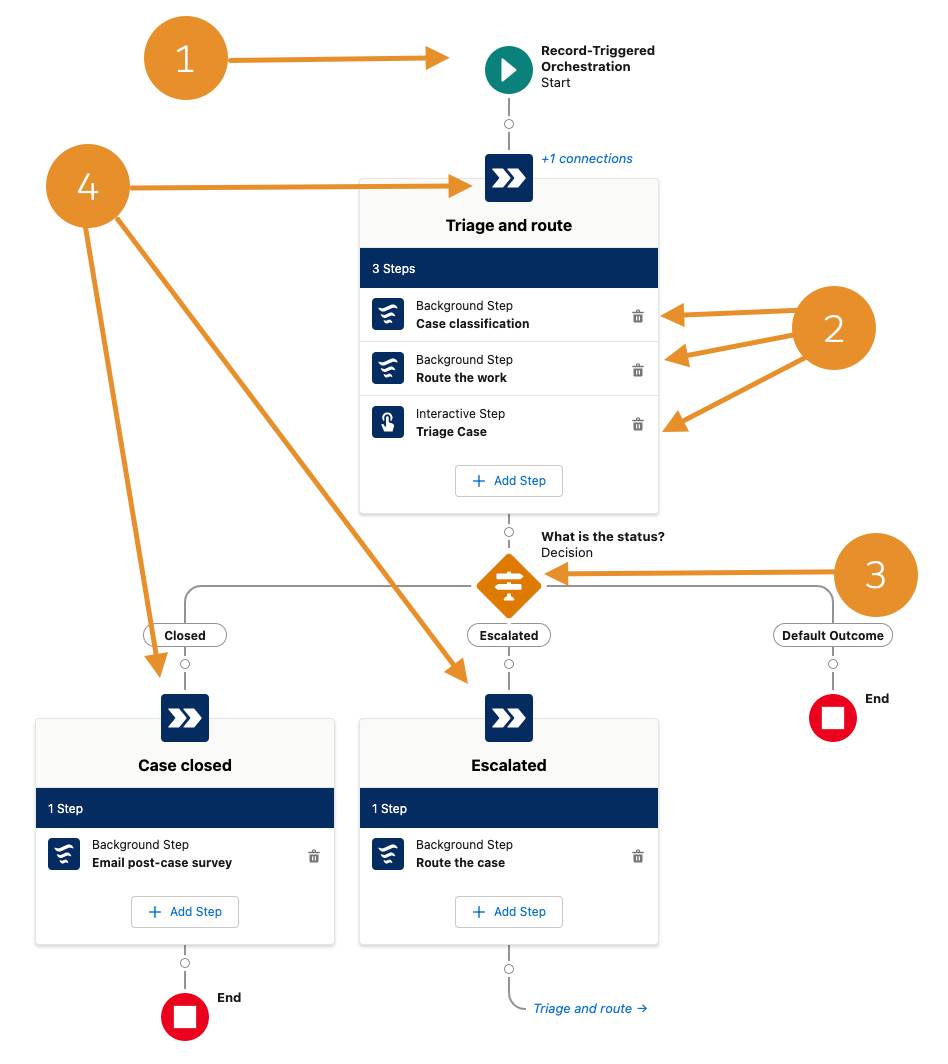
Trigger/Start (1)
Our example is a record-triggered orchestration. This orchestration is launched when a Case record is created. You can also build an autolaunched orchestration.
Steps/Flows (2)
There are multiple flows to perform a series of steps. There are both background and interactive steps.
Decision (3)
This orchestration has a decision to assign the status of the case. It is configured to either close or escalate the case.
Stages (4)
This orchestration has three stages. The first one contains the steps to triage and route the newly created case. The second stage closes the case and emails a survey. The third stage escalates the case to the next level.
How It Works
The orchestration begins when a Case record is created in the Salesforce org, which triggers the orchestration and launches the first stage, triage and route. This stage begins by launching two background steps, one to classify the case and another to identify the correct agent to whom this case should be routed. That assignee is then sent an interactive step in which they triage the case. The outcome of the triage stage can be one of two scenarios: The case is closed and the customer is emailed a post-case survey or the case needs to be escalated. If escalated, the triage and route stage is repeated, but this time it is escalated to a higher tier.
Once the orchestration is built and activated, it runs automatically whenever a case is created.
Let’s see what happens with an incoming customer service case.
The customer service agent receives the information about a customer issue and creates a New Case in Service Cloud. Once saved, a new Case record is created.
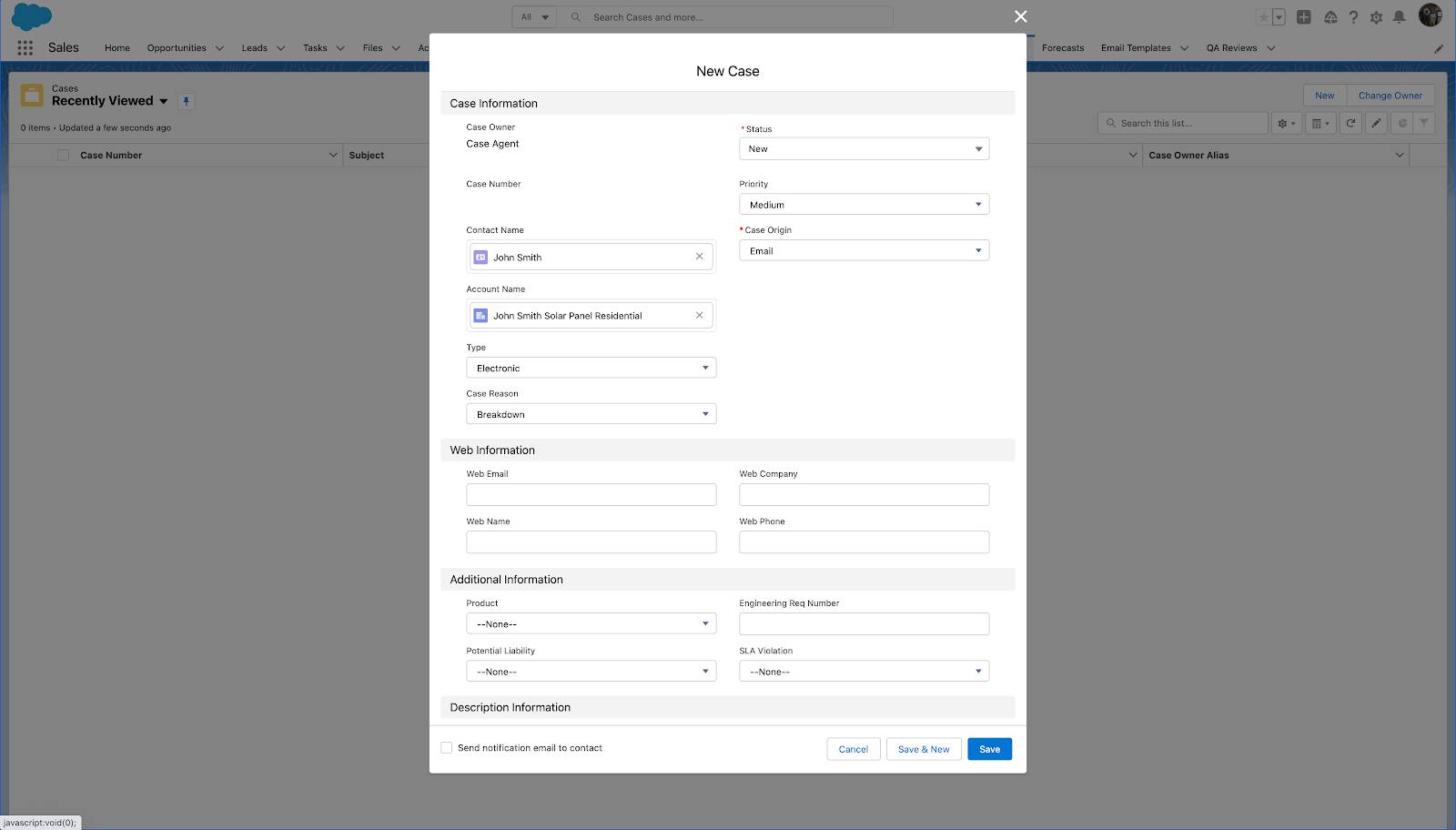
The orchestration begins and executes the first two background steps in the triage and route stage. The first interactive step, named Triage Case, is then executed and a notification for this step is sent to the assigned user.
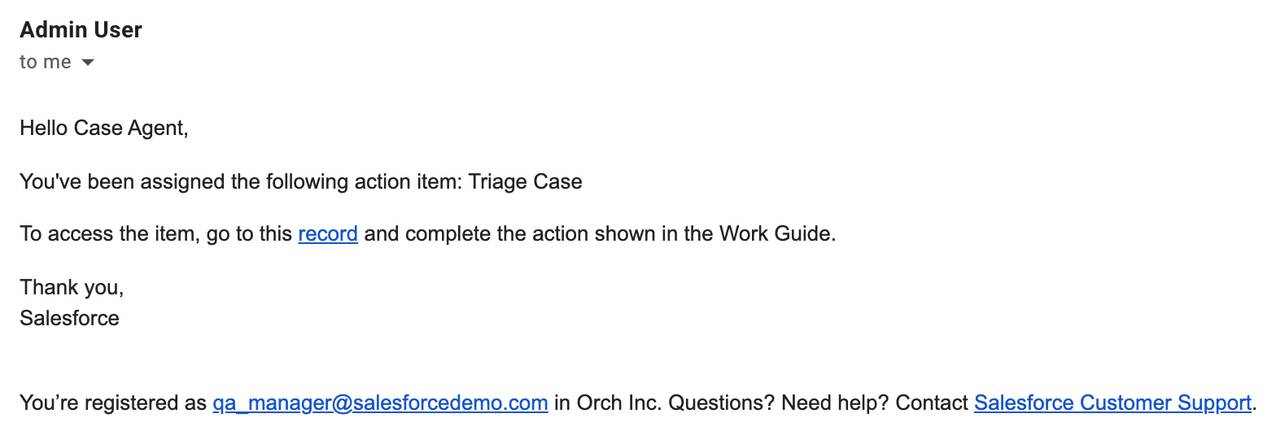
The assigned user then completes the interactive step by clicking the record link in the email and completing the required action in the Orchestration Work Guide. The completion of this interactive step triggers the next element of the orchestration which is the decision element that checks the status from the triaging step.
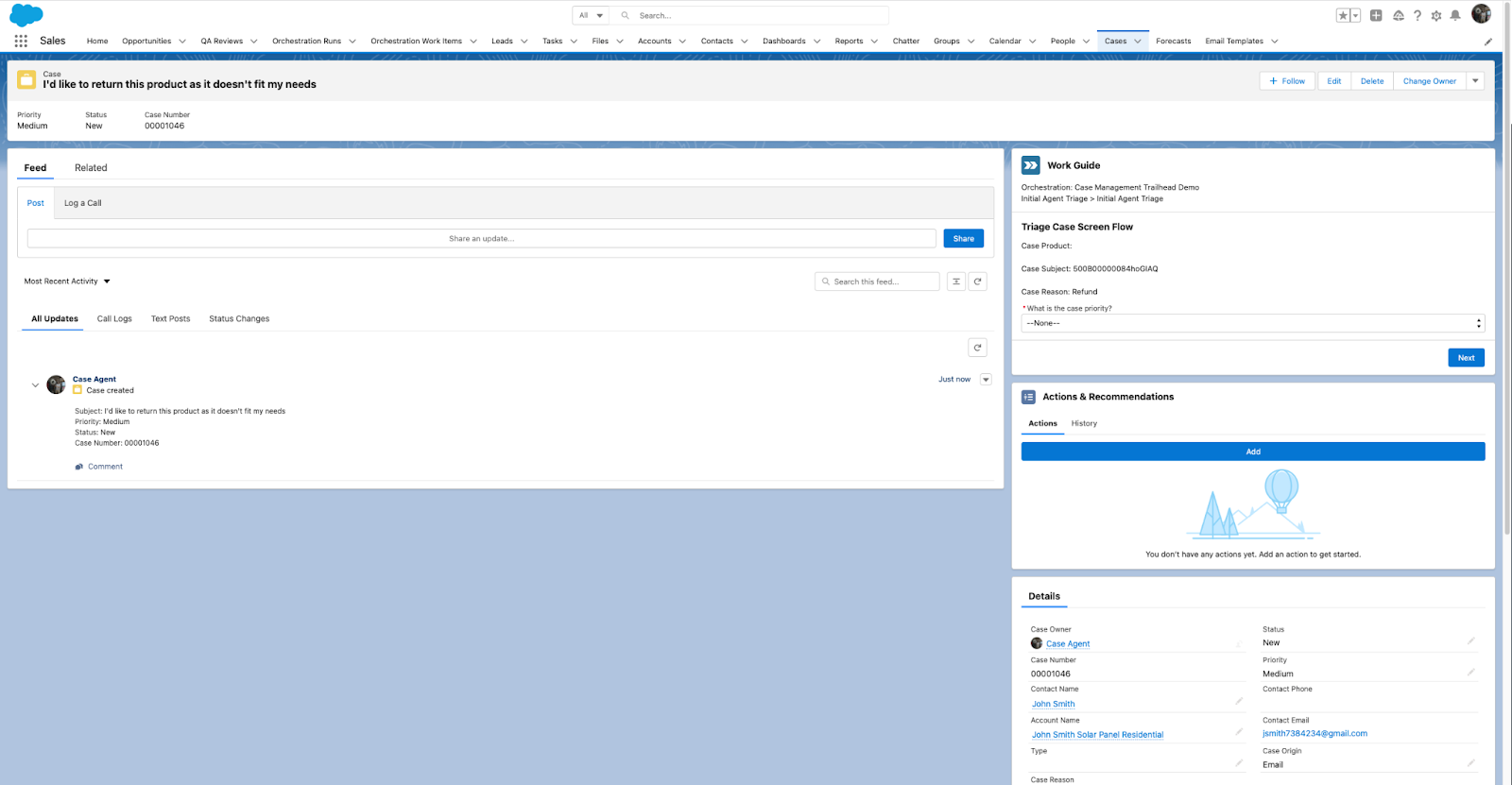
In this scenario the case agent needs to escalate this case to a higher support tier in order to resolve the customer's query. Once the escalation is indicated, the case gets rerouted and sent back to the triaging stage. From this point on, a member of the support team from the higher tier is the new assignee for the interactive triaging step.
Upon resolution of the case, the customer is emailed a post-case survey and the orchestration completes.
And that’s it! Ursa Major Solar has a more efficient case management system thanks to Flow Orchestration.
Background Steps
In the orchestration, Ursa Major Solar was able to use background steps to automate much of the task management, hand-offs, and background record-related work that the company’s case team performs on a daily basis. The image shows how much of this orchestration runs automatically, with no user intervention. All elements that execute automatically are highlighted in light blue.
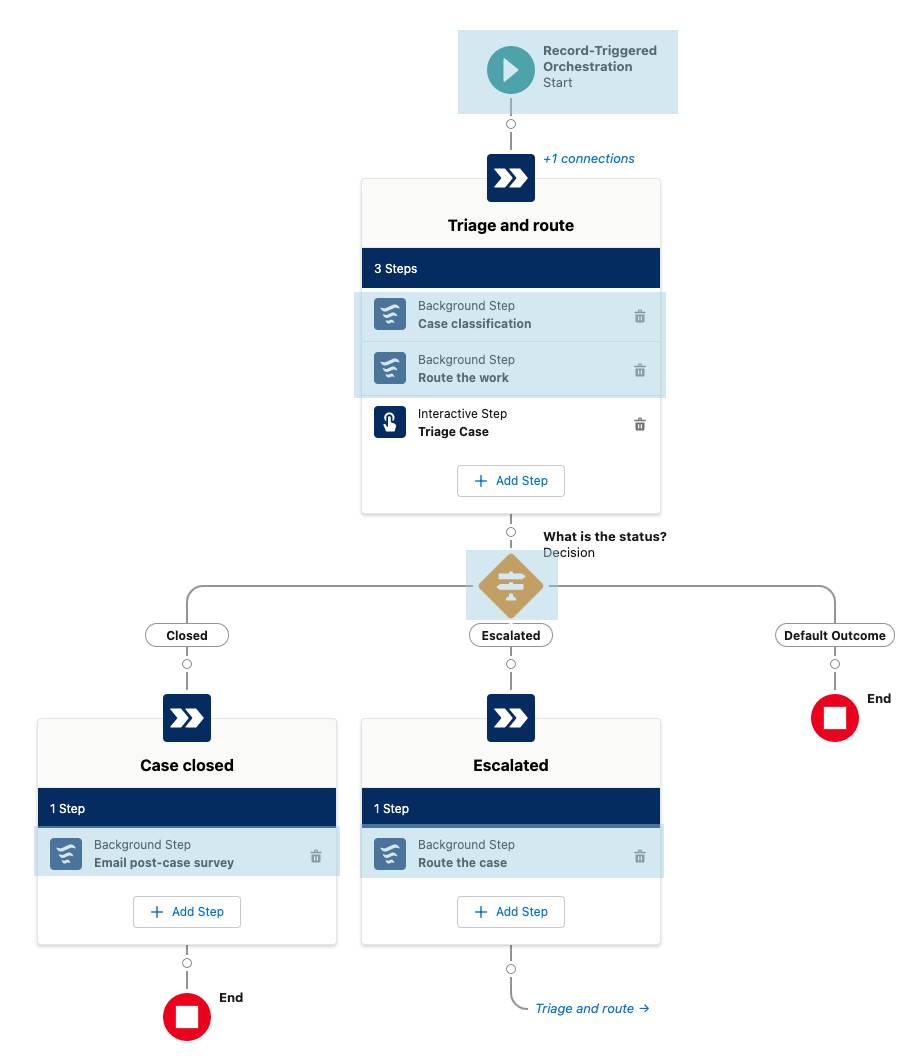
Though we specifically covered case management, the use cases are nearly limitless. Think about your business processes. From mortgage approvals to claims processing to return merchandise authorization, the options are endless thanks to the power of Flow Orchestration!
Now that you’ve learned the concepts of Flow Orchestration, let’s go build one! Head over to the Orchestrate Complex Processes with Flow Orchestration badge to get your hands on Flow Orchestration.
Resources